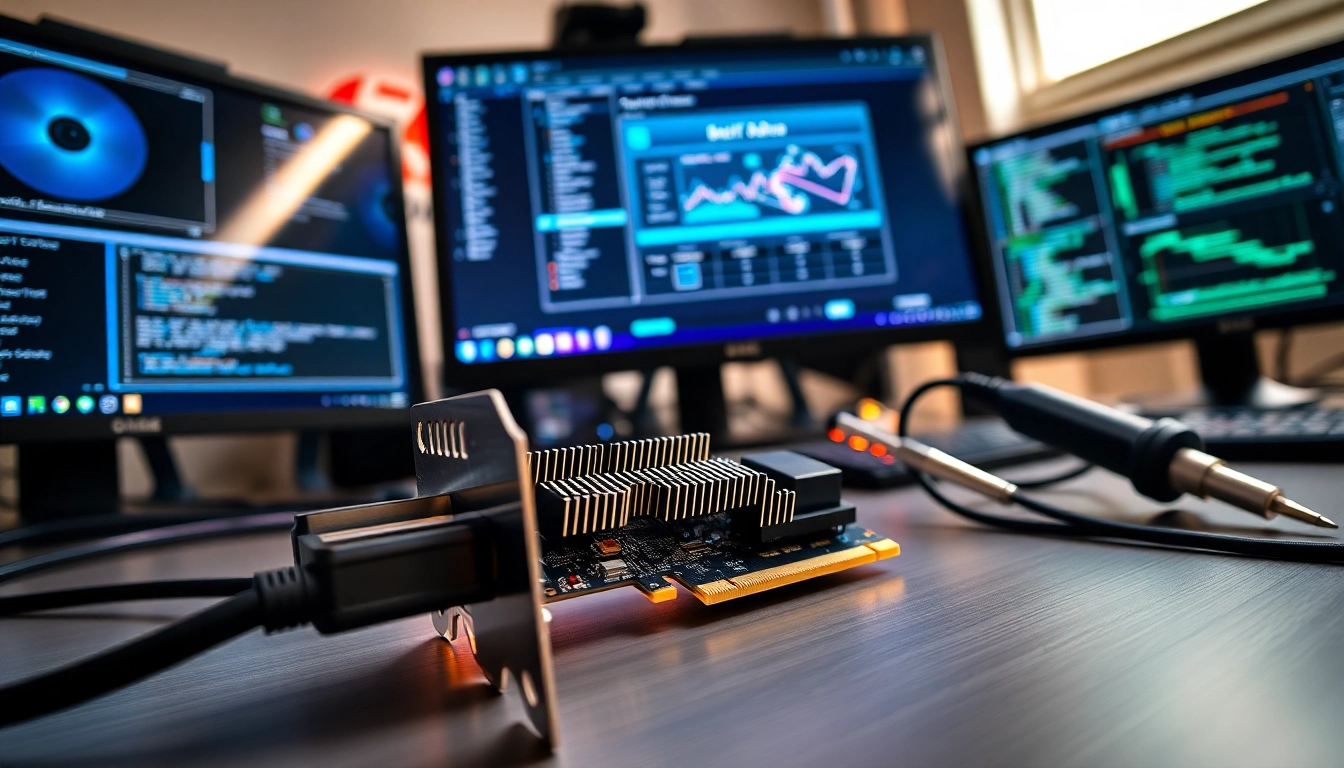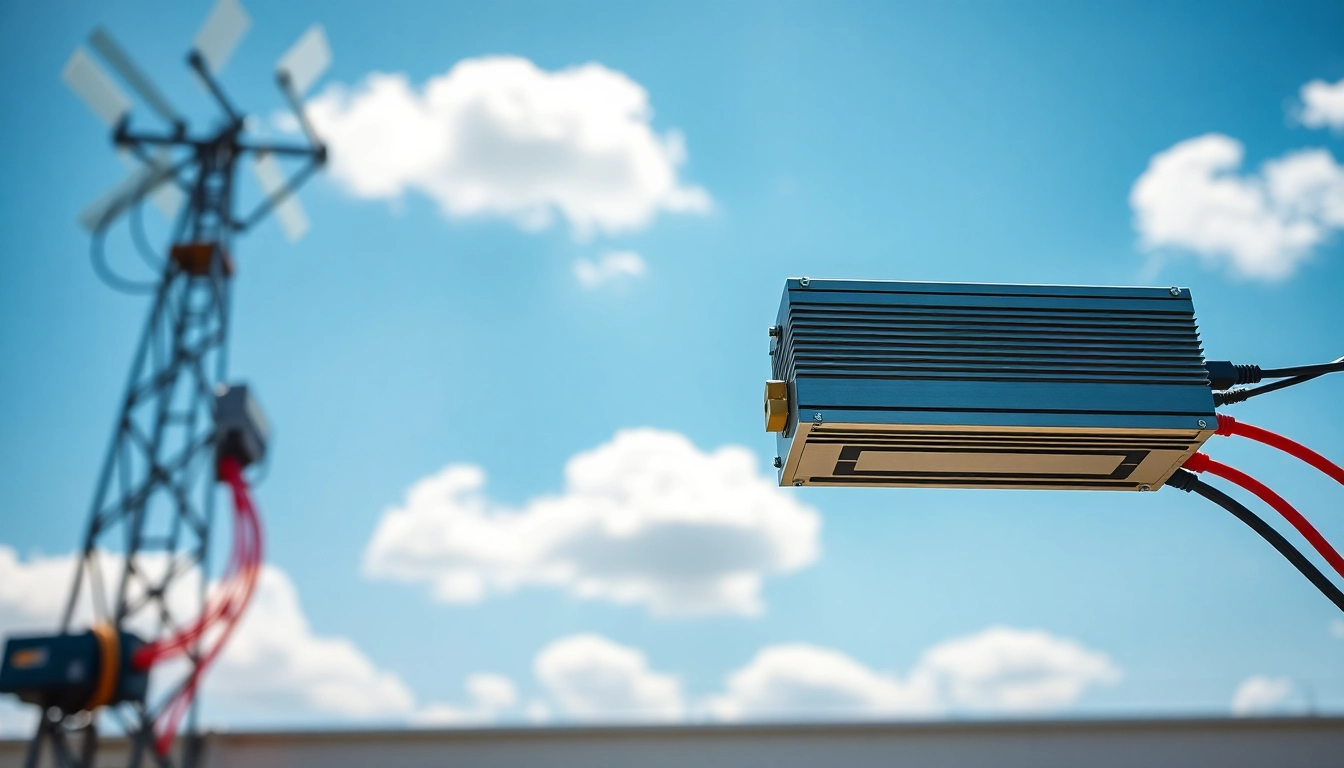Maximizing Gaming Performance with Effective DMA Firmware Solutions
Understanding DMA Firmware and Its Importance
In the realm of modern computing, particularly within the gaming industry, the term dma firmware has garnered significant attention. This specialized software plays an essential role in enabling direct memory access (DMA) for various applications, chiefly among gaming enthusiasts who seek enhanced performance and capabilities from their hardware. In this extensive guide, we will delve deep into the mechanics of DMA firmware, its evolution, benefits, types, installation processes, best practices, and methods for assessing its impact on gameplay performance.
What is DMA Firmware?
DMA firmware is a software component that facilitates direct memory access, a technique that allows devices to communicate with the computer’s memory without involving the CPU. This is particularly beneficial in gaming, where speed and efficiency are paramount. By bypassing the CPU, DMA firmware minimizes latency, which enhances the responsiveness of applications and gaming experiences.
Essentially, DMA firmware acts as the bridge that allows hardware, such as DMA cards, to read and write data directly to and from the system memory. This capability is especially useful in intensive applications, including real-time data processing tasks that are crucial in gaming, such as cheat-modulation in competitive play.
Evolution of DMA Firmware in Gaming
The evolution of DMA firmware has been remarkable, moving from basic functionalities to complex, highly specialized firmware designed with gaming in mind. Early implementations of DMA aimed solely to improve data transfer rates between peripherals and memory. However, as competitive gaming escalated, so did the need for more advanced features, driving the development of dedicated DMA firmware.
Today, many versions of DMA firmware support sophisticated functionalities such as cheat detection avoidance and enhanced security features, enabling users to maintain higher performance standards without triggering anti-cheat mechanisms commonly employed in online platforms.
Key Benefits of Using DMA Firmware
Employing DMA firmware comes with numerous advantages:
- Increased Speed: Since DMA allows direct communication with memory, it significantly speeds up data transfer processes.
- Reduced CPU Load: Bypassing the CPU for memory access tasks frees up processing power for other critical operations, contributing to overall system performance.
- Enhanced Gaming Performance: With reduced latency and improved response times, gamers experience smoother gameplay and increased competitive edge.
- Compatibility with Cheating Solutions: Some advanced DMA firmware is specifically designed to work with gaming cheats while avoiding detection from anti-cheat systems.
Types of DMA Firmware Available
Custom DMA Firmware Solutions
Custom DMA firmware solutions are tailored specifically for user needs or for compatibility with certain games. By crafting firmware that addresses specific requirements, gamers can achieve optimum performance and mitigate risks associated with generic, one-size-fits-all options. This customizability often includes specific features designed to avoid detection by in-game anti-cheat systems while providing an edge in gameplay.
Pre-Made DMA Firmware Options
On the other hand, pre-made DMA firmware options provide a quick and efficient solution for those who may not have the technical expertise to develop custom firmware. These options come with standard features that often cover a broad base of gaming applications. While they may lack some of the optimizations found in customized solutions, they still offer solid performance enhancements and can be readily implemented by most users.
Free Versus Paid DMA Firmware
The choice between free and paid DMA firmware is another consideration for users. Free versions often provide basic capabilities and can serve as a good entry point for those new to DMA technology. However, they may lack the advanced features and support that come with paid versions. Paid DMA firmware solutions typically offer tailored functionality, increased security measures, and ongoing updates to keep pace with evolving gaming environments.
Installing and Setting Up DMA Firmware
Initial Requirements for Installation
Before diving into installation, users must ensure they have the necessary hardware and software requirements. A compatible DMA card is crucial, along with a system that supports PCIe interfaces. Additionally, users should have administrator access to the target gaming system to execute firmware updates effectively.
Step-by-Step Installation Guide
Successful installation of DMA firmware involves several key steps:
- Insert the DMA card into an open PCIe slot on the motherboard.
- Power on the gaming PC and ensure that it recognizes the new hardware.
- Download the appropriate firmware from a trusted source, ensuring compatibility with your specific DMA card.
- Launch the installation tool and follow the prompts to apply the firmware update.
- Once installed, reboot the system to apply the changes effectively.
Troubleshooting Common Installation Issues
Despite following proper procedures, users may encounter installation issues. Common problems include hardware recognition failures, errors during the firmware flashing process, or conflicts with existing software. To troubleshoot:
- Ensure all connections are secure and the DMA card is correctly seated in its PCIe slot.
- Check for compatibility issues between the firmware and the DMA card.
- Look for updates or patches for the installation tool being used.
- Consult community forums for similar experiences and solutions.
Best Practices for Using DMA Firmware
Ensuring Compatibility with Your System
When using DMA firmware, it’s crucial to verify the compatibility of both the firmware and the DMA card with your existing system specifications. Regular compatibility checks can help avoid performance drops and potential system crashes.
Safeguarding Against Anti-Cheat Measures
To effectively utilize DMA firmware, users must be conscious of anti-cheat solutions employed by gaming titles. Ensuring that the chosen firmware version is designed to evade detection from such systems is paramount. This often involves using custom firmware solutions that incorporate updated techniques for avoidance.
Regular Updates and Maintenance
Like any software component, DMA firmware requires regular updates to remain effective and secure. Keeping firmware up-to-date ensures optimal performance and compatibility with current hardware and gaming platforms.
Measuring the Performance Impact of DMA Firmware
Benchmarking Before and After Installation
To assess the effectiveness of installed DMA firmware, users should conduct performance benchmarks before and after installation. Popular benchmarking tools can measure frame rates, latency, and overall system responsiveness, providing a clear picture of the impact that the firmware has on gaming performance.
Monitoring Gameplay Performance
Continuous monitoring of gameplay performance metrics post-installation is crucial. This includes observing metrics such as frame rate stability, response time to input commands, and overall system load. This data will help users understand how well the firmware is functioning and if further adjustments or updates are necessary.
Analyzing Feedback and Community Insights
Input from the gaming community can offer valuable insights and experiences with specific DMA firmware versions. Participating in forums or discussion groups can help users gather diverse feedback and learn from the experiences of others, which can inform their decisions regarding firmware usage.














Post Comment